3-Day Solo Adventure & Culinary Exploration in Untouched Seoul
Seoul, South Korea
3 days
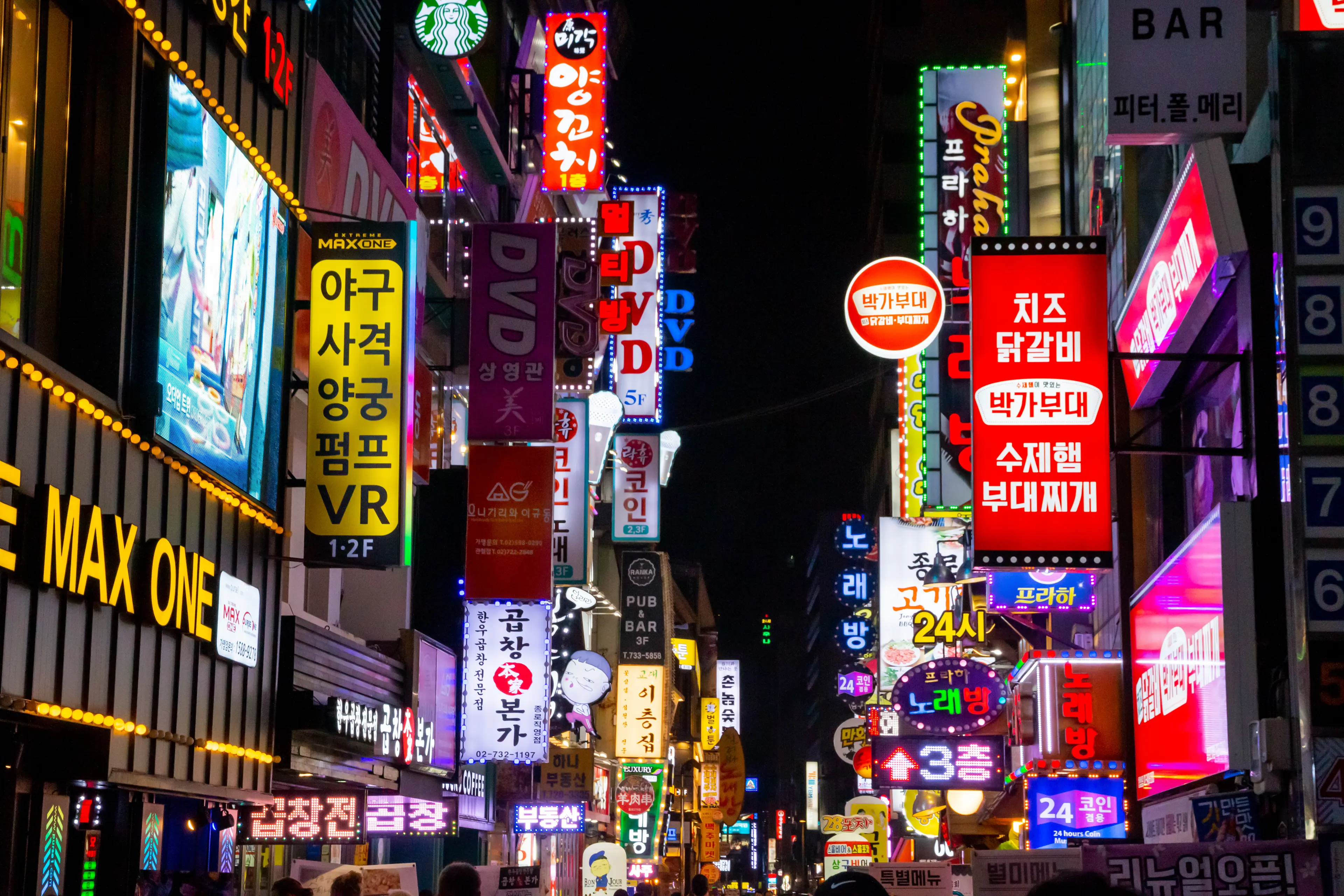
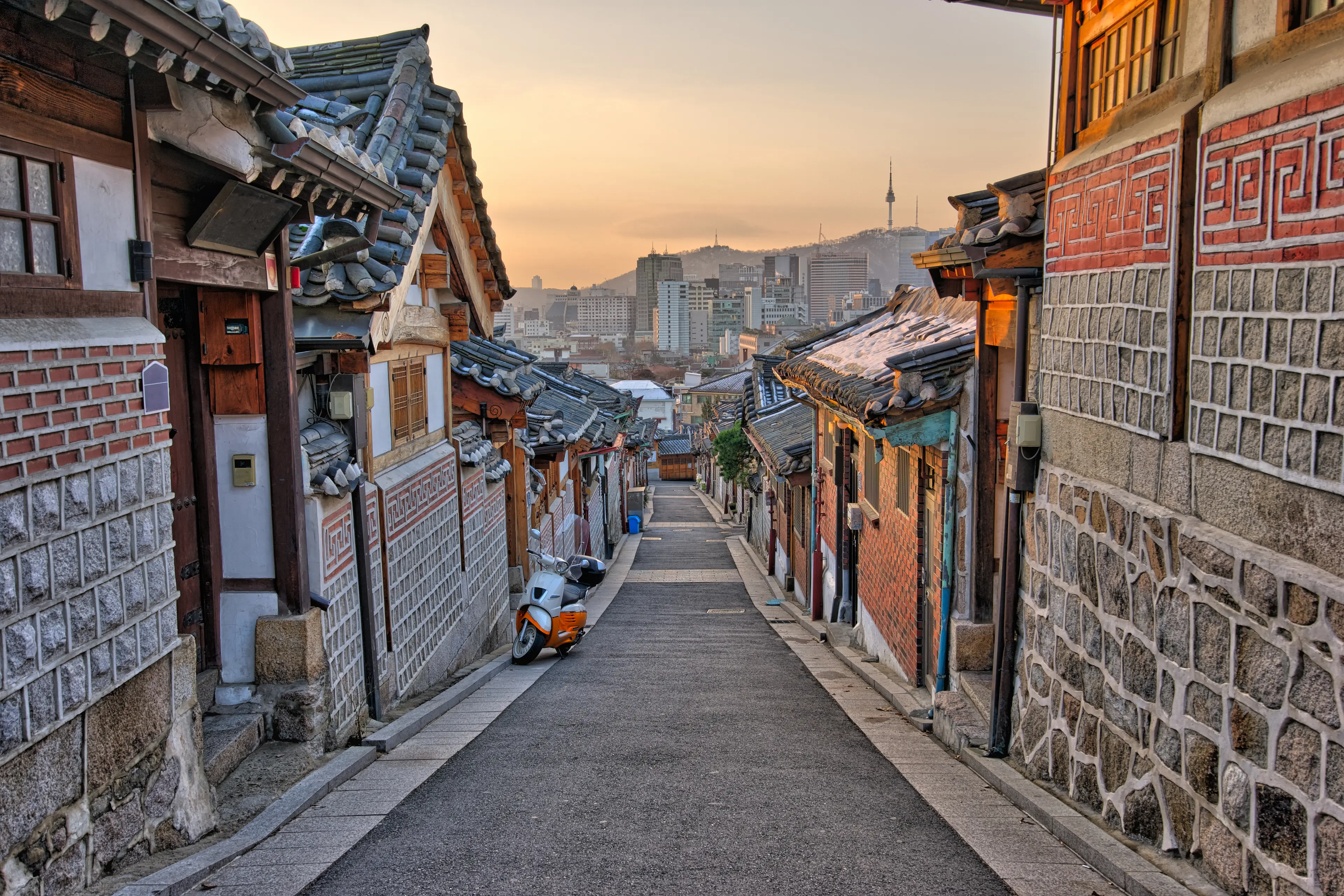
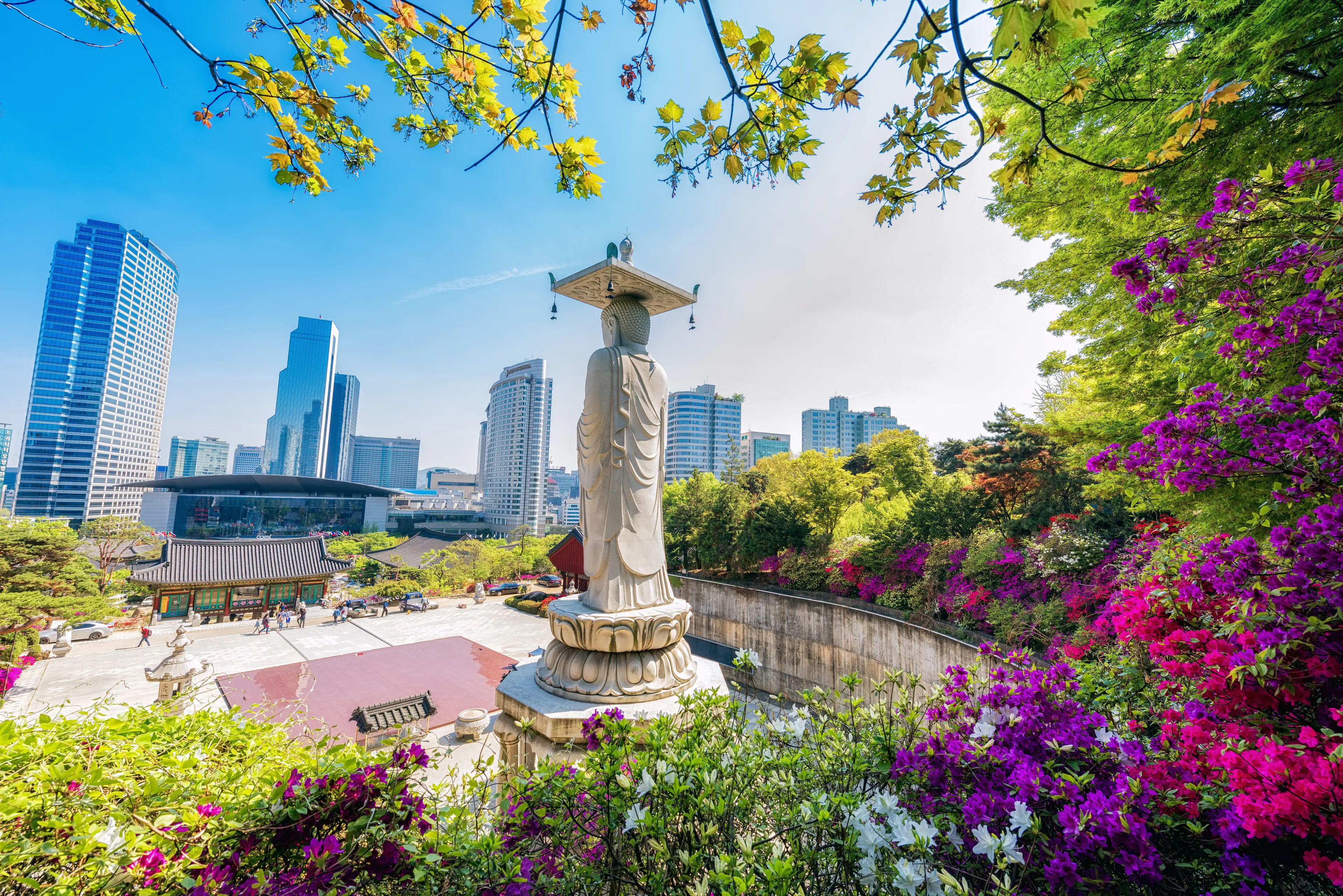
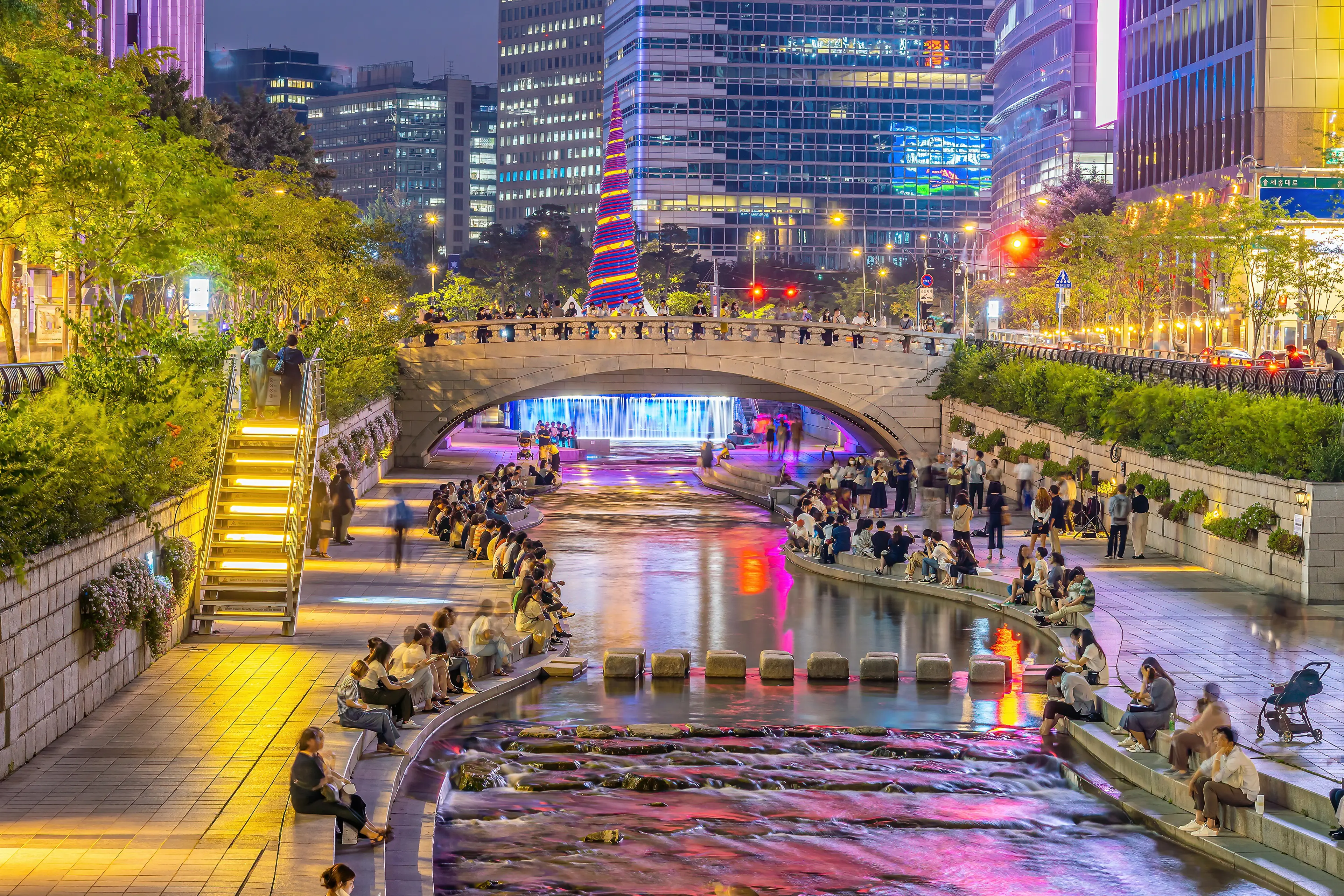
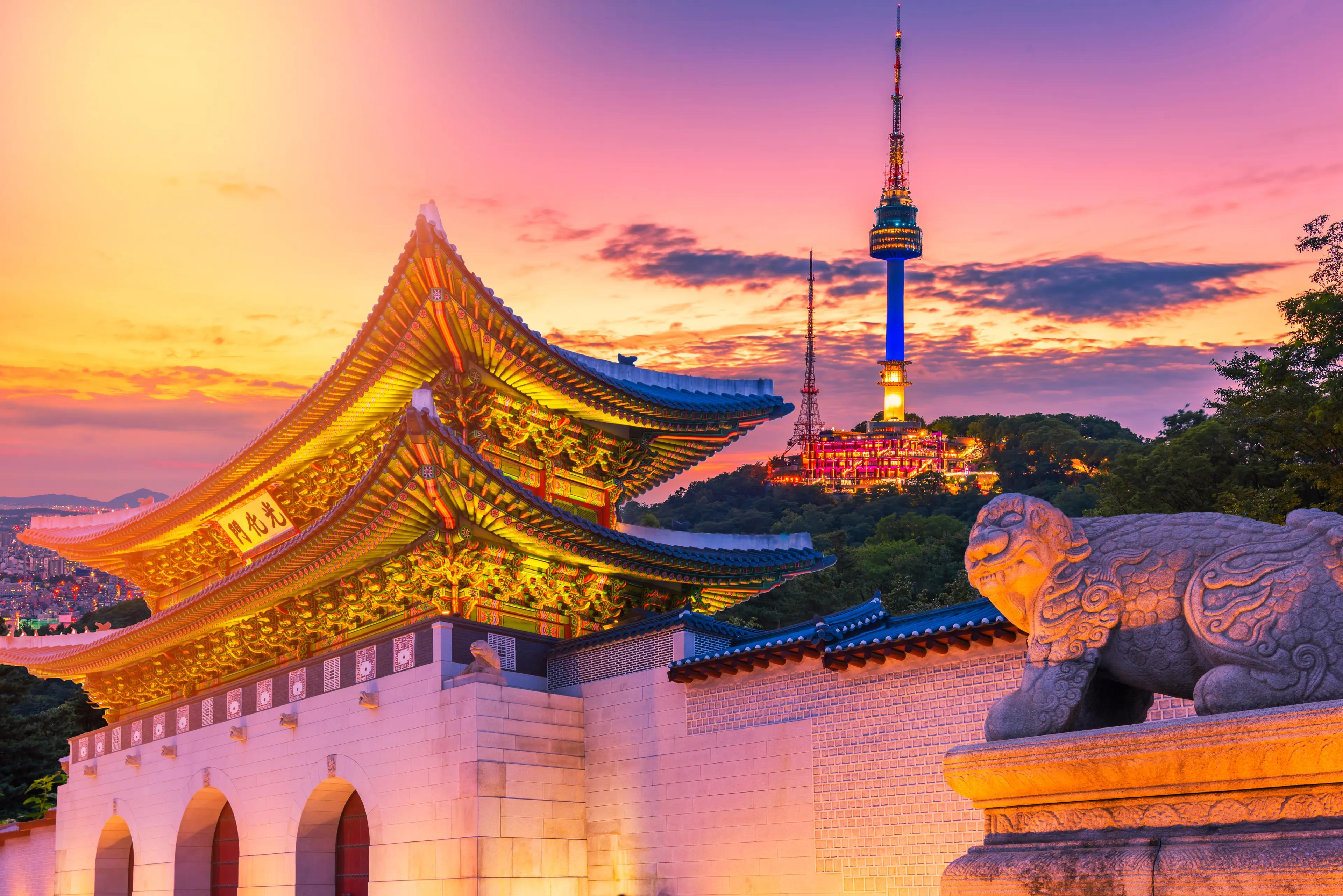
About Seoul, South Korea
Experience the vibrant culture and rich history of Seoul, South Korea's bustling capital city. Marvel at the grandeur of the ancient Gyeongbokgung Palace, explore the traditional Bukchon Hanok Village, and shop till you drop at the bustling Myeongdong district. Indulge in authentic Korean cuisine at local markets like Gwangjang and savor the nightlife in the lively Hongdae area. Hike up the Namsan Mountain for a panoramic view of the cityscape, or unwind in the tranquil surroundings of the Cheonggyecheon Stream. With its blend of modernity and tradition, Seoul offers an unforgettable journey through the heart of Korean heritage.
3-Day Itinerary
Day 2
Outdoor Adventure and Shopping Extravaganza
Morning
Begin your day with a hike up Namsan Mountain. The trail offers stunning views of the city and leads to N Seoul Tower, a popular landmark where you can enjoy panoramic views of Seoul.
Lunch
Have lunch at a local restaurant and try jjigae, a hearty Korean stew. There are many varieties to choose from, including kimchi jjigae and doenjang jjigae.
Afternoon
Spend the afternoon exploring Myeongdong, Seoul's shopping mecca. Here, you can find everything from high-end fashion to Korean skincare products. Don't forget to try street food like tteokbokki or hotteok.
Dinner
For dinner, try samgyetang, a ginseng chicken soup that's a staple in Korean cuisine. It's a comforting and nourishing dish perfect for replenishing energy after a day of exploration.
Evening
End your day in Itaewon, a multicultural neighborhood known for its diverse food scene. Here, you can find a variety of international cuisines, unique bars, and vibrant nightlife.
Day 3
Historical Landmarks and Charming Neighborhoods
Morning
Start your day with a visit to Gyeongbokgung Palace, the largest of the Five Grand Palaces in Seoul. Don't miss the changing of the guard ceremony, a tradition that dates back to the Joseon Dynasty.
Lunch
For lunch, try sundubu-jjigae, a spicy tofu stew that's a staple in Korean cuisine. Enjoy it at a local restaurant in the area.
Afternoon
Spend the afternoon in Samcheong-dong, a charming neighborhood known for its traditional hanok houses, art galleries, and quaint cafes. Take a leisurely stroll and enjoy the peaceful atmosphere.
Dinner
For your final dinner, enjoy a meal of pajeon and makgeolli. Pajeon is a savory Korean pancake, and makgeolli is a traditional Korean rice wine. It's the perfect way to end your culinary adventure in Seoul.
Evening
Spend your last evening in Gangnam, an upscale district known for its modern architecture, high-end shopping, and vibrant nightlife. It's the perfect place to celebrate the end of your adventure in Seoul.
Attractions in Itinerary (7)

1Bukchon Hanok Village
Bukchon Hanok Village, located in Samcheong-dong, is a preserved traditional Korean village where visitors can experience the traditional Korean way of life.

2Insadong
Insadong, located near Samcheong-dong, is a vibrant shopping district known for its antique shops, art galleries, and traditional tea houses.

3N Seoul Tower
A communication and observation tower located on Namsan Mountain, offering panoramic views of the city.

4Myeongdong
One of the primary shopping districts in Seoul. The two main streets meet in the center of the block with one beginning from Myeong-dong Subway Station.

5Gyeongbokgung Palace
A royal palace located in Seoul, representing the beauty of traditional Korean architecture.
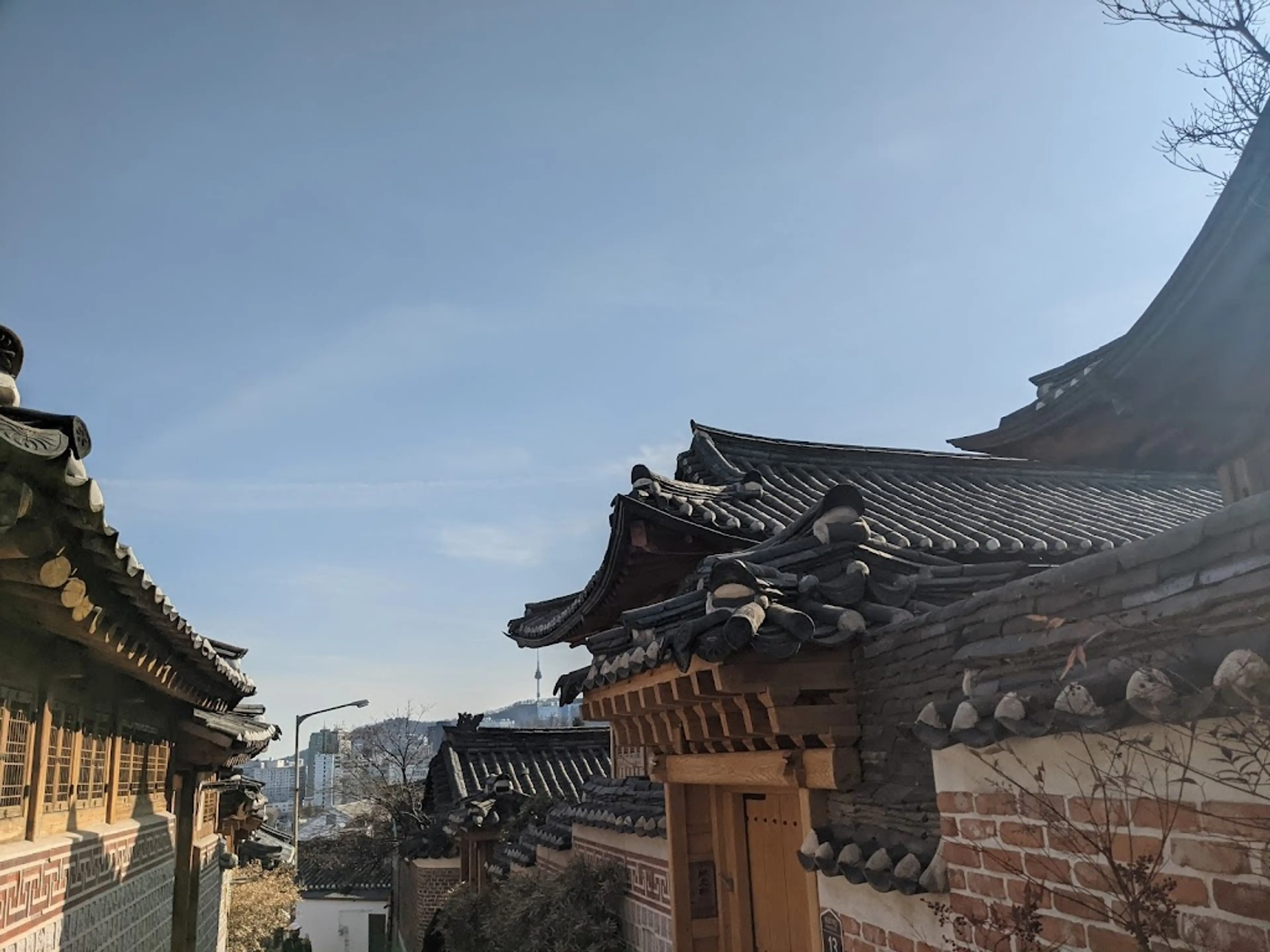
6Samcheong-dong
Samcheong-dong is known for its mix of traditional and modern architecture, with hanok houses alongside trendy cafes and boutiques. It's a popular area for cultural experiences and shopping.

7Gangnam
Gangnam is a trendy and upscale district known for its high-end shopping, vibrant nightlife, and diverse dining options.
Local Food and Drinks (12)

Kimchi
A staple in Korean cuisine, Kimchi is a traditional side dish made from salted and fermented vegetables, most commonly napa cabbage and Korean radishes, with chili pepper and other spices. It's a must-try when visiting Seoul.

Bibimbap
Bibimbap is a popular Korean dish that translates to 'mixed rice'. It typically consists of warm white rice topped with seasoned vegetables, chili pepper paste, soy sauce, a raw or fried egg, and sliced meat, usually beef.

Samgyeopsal
Samgyeopsal is a popular Korean BBQ dish. It consists of thick, fatty slices of pork belly meat that are grilled on your table before being dipped in a seasoning made of salt and pepper mixed in sesame seed oil, then wrapped in lettuce along with grilled slices of garlic, grilled slices of onion, shredded green onions, and kimchi.

Tteokbokki
Tteokbokki is a popular Korean street food. It's made from soft rice cake, fish cake, and sweet red chili sauce. It's a must-try for those who love spicy food.

Japchae
Japchae is a savory and slightly sweet dish of stir-fried glass noodles and vegetables that is usually served as a side dish during Korean holidays or special occasions.

Gimbap
Gimbap or kimbap is a popular Korean fast food made from steamed white rice (bap) and various other ingredients, rolled in gim (sheets of dried laver seaweed) and served in bite-sized slices.

Sundubu-jjigae
Sundubu-jjigae is a hot and spicy jjigae (Korean stew) made with uncurdled dubu (tofu), seafood (oysters, mussels, clams and shrimp are common ingredients), vegetables, mushrooms, onion, scallions, and chili powder in Korea.

Bingsu
Bingsu is a popular Korean shaved ice dessert with sweet toppings such as chopped fruit, condensed milk, fruit syrup, and red beans.

Hotteok
Hotteok is a variety of filled Korean pancake, and is a popular street food of South Korea. It's usually filled with sugar, honey, chopped peanuts, and cinnamon.

Soju
Soju is a clear, colorless distilled beverage of Korean origin. It is usually consumed neat, and its alcohol content varies from about 16.8% to 53% alcohol by volume (ABV).

Makgeolli
Makgeolli is a slightly sweet alcoholic beverage native to Korea. It is made from rice or wheat mixed with nuruk, a Korean fermentation starter.

Banana Milk
Banana Milk is a South Korean signature drink first launched in 1974. It's a sweet, dessert-like beverage that has a light, yet rich, banana flavor.
Best time to visit
The best time to visit Seoul, South Korea is during the spring (April to June) and autumn (September to November). During these periods, the weather is the most favorable with mild temperatures, making it ideal for sightseeing. Spring is particularly beautiful with cherry blossoms in full bloom, while autumn offers vibrant fall foliage. These seasons also have less tourists compared to the summer months, providing a more relaxed atmosphere.
How to get around
Subway
Seoul has an extensive and efficient subway system that covers nearly every part of the city. It is one of the most convenient ways to travel around Seoul. The subway system is also connected to the national train system, making it easy to travel to other parts of the country as well.
Bus
Buses in Seoul are plentiful and cover routes that the subway does not. There are four types of buses: blue, green, red, and yellow. Blue buses travel long distances, green buses are neighborhood buses, red buses are express buses for long distances, and yellow buses circulate in downtown areas.
Taxi
Taxis are a convenient way to get around Seoul, especially if you're traveling in a group or have a lot of luggage. There are regular taxis and deluxe taxis, the latter being more expensive but offering more comfort. Most taxi drivers do not speak English, so it's helpful to have your destination written in Korean.
Ridesharing
Ridesharing services like Uber are not widely available in Seoul. However, a local equivalent called Kakao T is widely used. It works similarly to Uber, allowing you to book a ride through a smartphone app.
Bicycle
Seoul has a public bike rental system called Ttareungi. It's a great way to explore the city, especially the areas along the Han River. You can rent a bike from one of the many rental stations around the city.
Walk
Seoul is a walkable city with many pedestrian-friendly areas. Walking is a great way to explore the city's many neighborhoods, markets, and historical sites. However, be aware that the city is hilly and some areas may require a bit of a climb.
Car Rental
Renting a car in Seoul is not recommended due to heavy traffic and limited parking. However, if you plan to travel outside of the city, a rental car could be a good option. Remember that you will need an International Driving Permit to rent a car in South Korea.
Important information
Currency₩ KRW
Time zoneUTC+9
Driving sideRight
Emergency phoneAmbulance: 119; Fire: 119; Police: 112
Drinking waterYes, but some opt for bottled water
Power sockets
Voltage220 V
Things to know about Seoul, South Korea as a first time visitor
1
Seoul is the capital city of South Korea and is known for its modern skyscrapers, high-tech subways, and pop culture mixed with Buddhist temples, palaces, and street markets.
2
The official language is Korean, but English is widely taught in schools and is commonly used in business and tourism areas.
3
South Korea has a 9-hour time difference ahead of Greenwich Mean Time (GMT+9). There is no daylight saving time.
4
The currency used is the South Korean Won (KRW). Credit cards are widely accepted, but it's always good to have some cash for small vendors.
5
Tipping is not customary in Korea. However, some hotels and upscale restaurants may include a 10% service charge.
6
Seoul has a temperate climate with four distinct seasons. Summers (June to August) can be hot and humid with temperatures ranging from 75°F to 95°F (24°C to 35°C), while winters (December to February) can be very cold with temperatures from 15°F to 30°F (-9°C to -1°C).
7
Public transportation in Seoul is excellent. The subway system is extensive, efficient, and inexpensive. Buses and taxis are also readily available.
8
South Korea uses the Type C and Type F plug types, the same as Europe. The standard voltage is 220 V and the standard frequency is 60 Hz.
9
South Korea is generally safe for tourists, but as with any major city, it's important to stay vigilant and be aware of your surroundings.
10
South Korea has a high standard of healthcare. Pharmacies are plentiful and most medications can be purchased over the counter.
11
Seoul is a city that never sleeps. Many shops, restaurants, and markets are open 24/7.
12
South Koreans are known for their love of technology. Free Wi-Fi is widely available throughout the city.
13
Drinking alcohol in public places is legal in South Korea. Soju, a local spirit, is a popular choice.
14
South Korea has strict laws against drug use. Penalties can be severe, including imprisonment and deportation.
15
South Koreans are generally polite and reserved. It's important to respect local customs and etiquette.
16
Korean cuisine is diverse and delicious. Don't miss out on trying local dishes like Bibimbap, Kimchi, and Korean BBQ.
17
South Korea has a 10% Value Added Tax (VAT) on most goods and services. Tourists can often get a VAT refund on purchases made at 'Tax Free' shops.
18
Seoul is a shopper's paradise. From high-end fashion to traditional crafts, there's something for everyone.
19
South Korea has strict laws on smoking. It's prohibited in most public places, including restaurants, cafes, and subway stations.
20
Seoul is a very walkable city with many pedestrian-friendly streets and parks. However, it's also a city of hills, so comfortable shoes are a must.
Basic Korean to know as a first time visitor
English phrase | Native phrase | Pronunciation | When to use it |
|---|---|---|---|
Hello | 안녕하세요 | Annyeonghaseyo | Greeting someone |
Goodbye | 안녕히 가세요 | Annyeonghi gaseyo | Saying goodbye |
Thank you | 감사합니다 | Gamsahamnida | Expressing gratitude |
Yes | 네 | Ne | Agreeing or confirming |
No | 아니요 | Aniyo | Disagreeing or denying |
Please | 제발 | Jebal | Making a request |
Sorry | 미안합니다 | Mianhamnida | Apologizing |
I don't understand | 이해하지 못해요 | Ihaehaji mothae | When you don't understand something |
Do you speak English? | 영어를 할 수 있나요? | Yeong-eoreul hal su issnayo? | Asking if someone speaks English |
Where is the bathroom? | 화장실이 어디에 있나요? | Hwajangsiri eodie issnayo? | Asking for directions to the bathroom |
How much is this? | 이것은 얼마입니까? | Igeoseun eolmaimnikka? | Asking the price of something |
Help | 도와주세요 | Dowajuseyo | Asking for help |
I'm lost | 길을 잃었습니다 | Gireul ilheotseumnida | When you are lost |
Can I have the menu, please? | 메뉴를 주세요 | Menyureul juseyo | Asking for the menu in a restaurant |
Water | 물 | Mul | Asking for water |
Beer | 맥주 | Maekju | Ordering a beer |
Excuse me | 실례합니다 | Sillyehamnida | Getting someone's attention |
Taxi | 택시 | Taeksi | When you need a taxi |
Train station | 기차역 | Gichayeok | Asking for directions to the train station |
Airport | 공항 | Gonghang | Asking for directions to the airport |
Packing List
Clothing
Underwear (3 pairs)
Socks (3 pairs)
T-shirts (3)
Pants/Jeans (2 pairs)
Comfortable walking shoes
Pajamas
Sweater or jacket (depending on the season)
Raincoat or umbrella (if forecast predicts rain)
Swimsuit (if planning to use a hotel pool or visit a spa)
Toiletries
Travel-sized shampoo
Travel-sized conditioner
Travel-sized body wash
Toothbrush
Toothpaste
Deodorant
Razor
Shaving cream
Makeup and makeup remover (if applicable)
Sunscreen
Hand sanitizer
Travel documents and essentials
Passport
Driver's license or other ID
Credit and debit cards
Cash (in local currency)
Hotel and transportation reservation confirmations
Travel insurance documents
Emergency contacts and addresses
Electronics and gadgets
Smartphone
Charger for smartphone
Universal power adapter
Headphones
Camera (if not using phone camera)
Charger for camera
Portable power bank
Miscellaneous items
Snacks
Travel pillow
Travel guidebook for Seoul
Map of Seoul
Phrasebook or language app
Reusable water bottle
First aid kit
Prescription medications (if applicable)
Travel-sized laundry detergent packets
Earplugs and eye mask
Weather Conditions
Seoul, South Korea experiences a temperate climate with four distinct seasons, which can greatly impact your travel plans. Spring (April to June) is a beautiful time to visit Seoul. The weather is mild, with average temperatures ranging from 50°F to 75°F (10°C to 24°C). This is also the season of cherry blossoms, making it a picturesque time to explore the city. However, it's also the season for yellow dust storms, which originate from Mongolia and China's deserts, so those with respiratory issues should take precautions. Summer (July to August) in Seoul can be hot and humid, with temperatures often reaching up to 85°F to 95°F (29°C to 35°C). It's also the monsoon season, so expect heavy rains, especially in late July and early August. If you're visiting during this time, don't forget to pack an umbrella and raincoat. Autumn (September to November) is another great time to visit Seoul. The weather is quite pleasant, with temperatures ranging from 45°F to 70°F (7°C to 21°C). The city is also awash with vibrant fall colors, making it a perfect time for sightseeing. Winter (December to March) in Seoul is cold and dry, with temperatures often dropping to 15°F to 30°F (-9°C to -1°C). Snowfall is common, so pack warm clothing. This is also a great time to visit if you enjoy winter sports, as there are several ski resorts nearby. Regardless of when you visit, it's always a good idea to check the weather forecast before your trip and pack accordingly. Seoul's weather can be unpredictable, so it's best to be prepared for all possibilities.
| Month | Hi / Lo (°C) | Weather Overview |
|---|---|---|
January | 1° / -6° | January is the coldest month in Seoul, with temperatures often dropping below freezing. It's also the driest month, so pack warm and dry clothes. |
February | 4° / -4° | February is still quite cold, but temperatures start to rise slightly. It's a good time to visit if you enjoy winter sports. |
March | 10° / 1° | March sees the start of spring, with temperatures rising and the city starting to bloom. It's a beautiful time to visit, but pack a mix of warm and cool clothes. |
April | 18° / 7° | April is a comfortable month to visit, with mild temperatures and plenty of sunshine. The cherry blossoms are in full bloom, making it a popular time for tourists. |
May | 23° / 12° | May is warm and sunny, with temperatures perfect for exploring the city. It's also the start of the rainy season, so pack an umbrella. |
June | 27° / 17° | June is the start of summer, with high temperatures and high humidity. It's a great time to visit if you enjoy hot weather, but be prepared for occasional rain showers. |
July | 30° / 22° | July is the hottest month in Seoul, with high humidity and frequent rain showers. It's a good time to visit if you enjoy hot weather, but be prepared for the heat. |
August | 30° / 22° | August is similar to July, with high temperatures and high humidity. It's also the peak of the rainy season, so pack waterproof clothing. |
September | 26° / 17° | September sees the end of summer and the start of autumn. It's a beautiful time to visit, with mild temperatures and less rain. |
October | 20° / 10° | October is a comfortable month to visit, with mild temperatures and plenty of sunshine. The autumn leaves are in full color, making it a popular time for tourists. |
November | 13° / 3° | November is the start of winter, with temperatures dropping and the city starting to look festive. It's a good time to visit if you enjoy cooler weather. |
December | 5° / -3° | December is cold and dry, with temperatures often dropping below freezing. It's a great time to visit if you enjoy winter sports and festive activities. |
Did you know?
Places near by Seoul, South Korea

Suwon Hwaseong Fortress
A UNESCO World Heritage site, this impressive structure was built in the late 18th century during the Joseon Dynasty.

Incheon Chinatown
Korea's only official Chinatown. It is home to many Chinese restaurants and shops, and is a popular tourist destination.

Nami Island
A half-moon shaped island that became famous through the Korean drama 'Winter Sonata'. It's known for its beautiful tree lined roads.

DMZ
The Demilitarized Zone (DMZ) is a border barrier that divides the Korean Peninsula roughly in half. It is the most heavily militarized zone in the world.

Everland
South Korea's largest theme park, featuring a zoo, water park, and many thrilling rides.

Korean Folk Village
A living museum that recreates the lifestyle of several centuries ago. There are traditional houses, tools and artifacts on display.

Jeonju Hanok Village
A village with over 800 traditional Korean hanok houses. The village is famous for its food, including bibimbap.

Gyeongju
A city known as 'The Museum Without Walls' due to its many historical sites and ruins.

Busan
South Korea's second largest city, known for its beaches, mountains and temples.